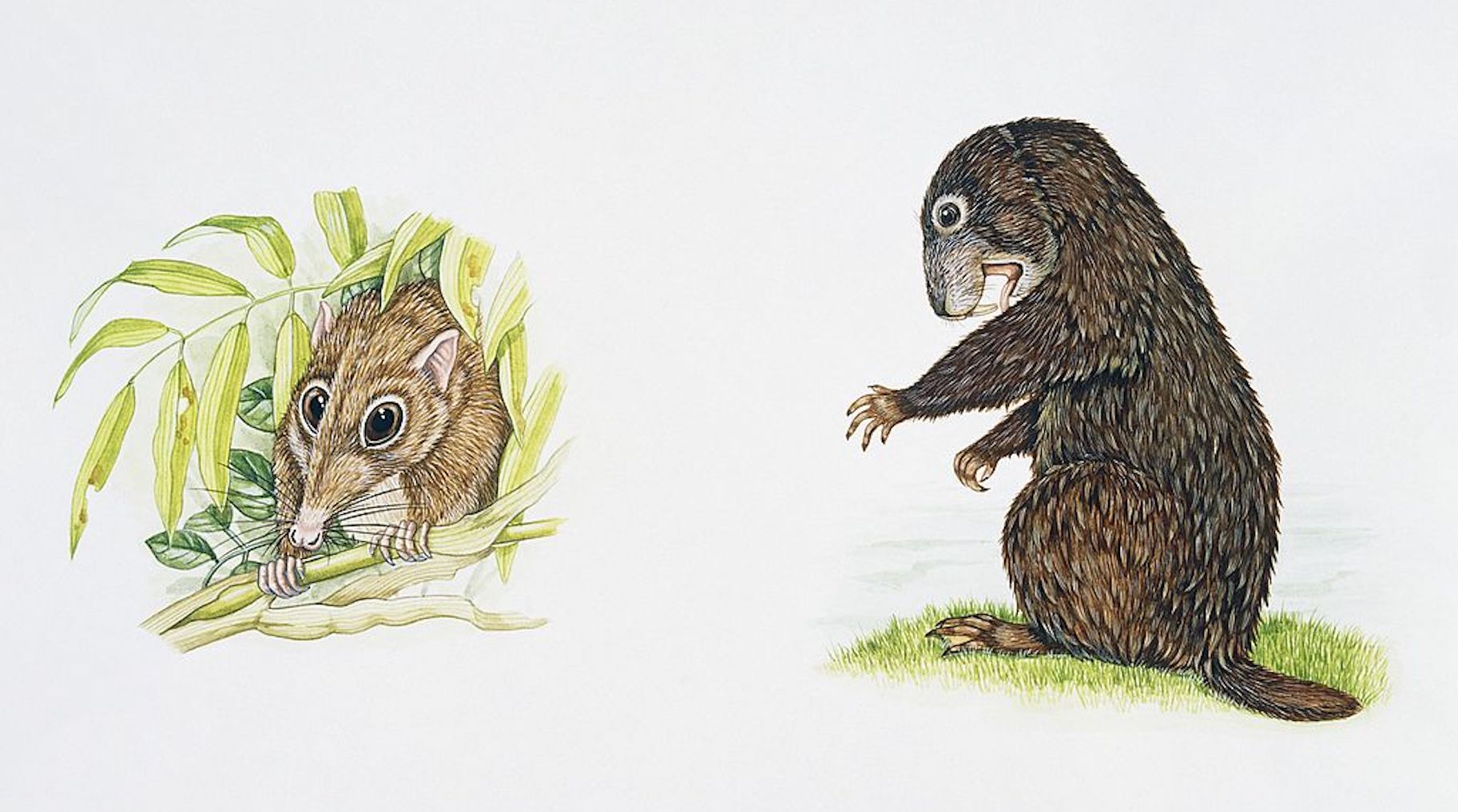Create a free profile to get unlimited access to exclusive videos, sweepstakes, and more!
All mammals have a rodent-like common ancestor, and now we have its genome
Genetic forensics 200 million years in the making.

The Croods gave moviegoers a comedic animated view of some of our human ancestors and the wild world they might have inhabited during the Pliocene epoch. In the sequel, The Croods: A New Age, our titular heroes encounter the Bettermans, a family of seemingly evolved humans. The conflict arises from the differences in the ways the Croods and the Bettermans interact with their environment and probably at least a hint of prehistoric xenophobia.
These sorts of interactions very likely occurred between disparate human groups in our distant past. There’s strong evidence that separated groups of people, and even distinct species of humans, interacted in our past to the point that many of us carry leftover DNA from our long lost genetic siblings. Those conflicts, both real and imagined, might have been avoided if only the players had realized they were more alike than different.
Jumping from the ancient past to the present, we might make the same argument for the ways in which modern humans interact with the other mammals which share our planet. Every mammal species, from the blue whale to the bumblebee bat, shares a common ancestor from which we all descend. And, despite the variety of forms we have evolved to take, we share more in common than we often realize. To illustrate that more clearly, we’re going to have to go further back in time than the Pliocene, to the birth of mammals roughly 200 million years ago.
An international team of more than 25 scientists have traced the history of mammals back to its origins to reconstruct the genome of our most common ancestor. The results were published in the Proceedings of the National Academy of Sciences.
Researchers used high-quality genome sequences from 32 living mammal species across 23 of the 26 known orders. The reconstruction data included genomes from humans, chimps, rabbits, manatees, rhinos, bats, and more. Work of this kind has only recently become possible thanks to the international efforts of the Earth BioGenome Project which aims to catalogue the genetic information of every living species on Earth and provided some of the genetic data.
Researchers then traced changes in genome from species to species, backward through time, to reconstruct the likely genome of the common ancestor of all mammals. Based on their findings, scientists believe the earliest common mammalian ancestor probably looked something like morganucodon (pictured above), a small rodent-like animal which lived approximately 200 million years ago.
This work provides a historical framework of chromosomal changes across mammalian lineages and could offer insight into what allowed mammals to thrive in an ever-changing world both during and after the reign of the dinosaurs.
Interestingly, the research discovered that the arrangement of some chromosomes appears to have been stable for more than 300 million years, predating the emergence of mammals. This suggests that evolution likes to keep the deck chairs arranged in certain ways even across divergent animal groups. Meanwhile, evolution occurs through the rearrangement of other segments. It’s almost as if natural selection allows you to swap seats with someone else but the chairs themselves are mostly bolted down.
Still, it’s impressive to consider that slow yet persistent swapping of genetic seats over a couple hundred million years results in the incredible diversity of species we see today. And it’s all because some ancient rat was pretty good at avoiding gnashing teeth and crashing space rocks.


























